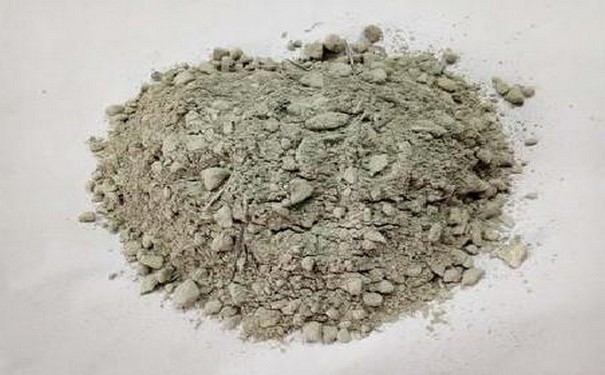What is the construction of refractory castable
2020-07-10 14:29:52
The construction of refractory castable includes stirring, pouring and curing.
1. Mixing: it must be mixed with the forced mixer or mortar mixer, not by hand.
Equipment and tools: forced or mortar mixer, bucket, scale, vibrator, tool shovel, trolley, etc.
Mix: In blender, add large bag, then add small bag, dry and stir for 12 minutes before adding.
Determination method of water content: In order to determine whether the water content of the mixture is appropriate, a simple "hand-kneading pellet" method can be used to carry out the test: if the deformation of pellet flows out of the joint, the water content is too large;
If the ball is cracked and scattered, it means water content.

The quantity is too small.
Mixed water consumption: according to the water consumption given in the batch product specification as the standard, strictly grasp the water consumption, accurate measurement.
Note: 1.
Tools used in the construction process, such as mixer, bucket, tool shovel, etc., should be cleaned in advance.
Lime, crushed stone, Portland cement and other impurities should not be mixed.
When mixed, the water must be clean tap water.
Under the condition of vibration discharge, the water consumption is as small as possible.
The mixing amount of mixer shall not be too large, the mixer shall be stuck and stopped according to the type of mixer.
The remaining curing blocks can no longer be mixed with water.
The temperature of the construction site must be between 5-30℃.
If the temperature at the construction site is below 5℃, the corresponding temperature rise protection measures must be taken: if the temperature at the site is above 30℃, the corresponding cooling protection measures must be taken; otherwise, the corresponding cooling protection measures will be taken
Difficulty or performance degradation.
2.
Casting construction: Check: before casting construction, check whether the anchorage welding is firm, the position above 500℃ should use heat-resistant screws.
The surface of the anchor should be painted with 0.5 to 1mm thick or wrapped with plastic tape to cushion the expansion force after heating and remove the sundry from the mold.
Casting time control: The newly mixed castable should be quickly poured, generally within 20 minutes.
Pour: Pour the mixture into the mold and insert the vibrator bar into the mold in time.
The vibration should be uniform.
As the slurry flows on the surface of the castable, the vibrator moves at 1m/min.
Pull the vibrator out at a slow speed.
Control of site temperature after pouring: Before condensation after pouring, the site temperature must be kept above 5°C (5-30 °C), and the site temperature below 5°C, corresponding temperature rise protection measures must be taken, otherwise delay will be caused and product performance will decline.
Note: 1.
After being vibrated, the surface of the castable shall remain natural and shall not be polished with tools or sprinkled with cement powder.
Vibrators should be kept in reserve in case of failure.
(2) Do not move, vibrate or tamp the castable within 24 hours after the completion of construction, especially before the castable is hardened, otherwise, the casting experience will cause cracks or even complete destruction.
(3) Castable shall be continuously constructed.
When the construction joint cannot be continuously constructed due to various reasons, the construction joint can be left at the expansion joint; otherwise, the construction shall be sewn into a pocked surface, that is, a transverse trench with a depth of 10mm, a width of 20mm and about 100mm on the castable material.
3.
Maintenance: Tools: polyethylene plastic film, straw bags, etc.
Environmental temperature requirements and control: The curing temperature of castable is between 15-35°C, beyond this temperature range, appropriate heating or cooling measures should be taken, otherwise the product performance will be reduced.
Curing: after castable hardening, should immediately cover the surface of the construction body with polyethylene plastic film, and humidify straw bag on it, to prevent water evaporation, promote the activation of cement.
After hardening, it is forbidden to knock on the door and vibrate within one day.
The mold should be ready in an hour.
After mold removal should be maintained for 2 days, the maintenance should be added polyvinyl plastic film and wet straw bag.
After 3 days of oxidation, remove polyethylene plastic film and wet straw bag.
The pouring body can be dried in the air for a day and then baked.





